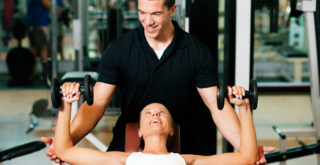Whether you are walking for heart health and fitness, to slim down your weight, or just to keep up your body, there is an appropriate form to doing it that will allow you to obtain effective results while minimizing your risk of injury.
The funny thing about walking is that we don’t tend to give it enough credit. Because it is something that we do so naturally when we need to get from point A to point B, we don’t tend to realize that it can be used for a great form of cardiovascular exercise that can burn fat and calories while strengthening the core, glutes, legs and shoulders.
Of course, not all walking is created equal – it couldn’t possibly be that easy! If you are scuffing down the street at a stroll, you’re really not doing much more for your health and fitness than sitting down on the couch or just standing still. A very slow walk doesn’t do very much for you unless you’re using it to build up your fitness level to be able to do a faster one.
The key to using walking for getting fit is to make sure that it is challenging without overexerting yourself and risking injury. Just like joggers and runners can pull muscles and hurt tendons, ligaments, and joints, so can walkers if they are not doing things properly. So here are some basics that can help you to make sure that you are walking in proper form to ensure an effective workout that is safest for your body health and fitness.
• Remember that the actual step that you take is very important. Your foot needs to strike the ground properly to keep the strain off your joints. To do this properly, your foot should go through its complete range of motions. When stepping, your foot should hit the ground smack on its heel, then the foot should roll forward until you are on the ball. Finally, your heel will lift off the ground as you push off with your toes until the focus is primarily on your big toe.
• Use a healthy natural stride that is right for your body. Don’t try to match that of your walking buddy (though it can be hard not to walk completely in line with someone else, at times. Walking faster doesn’t necessarily mean taking longer strides. This does work to some degree, but over-striding puts greater strain on joints and muscles and can lead to pain. Try taking more frequent steps instead of longer strides.
• Walk fast enough that you will start to feel your temperature rising after a few minutes, and after ten minutes it should start to become more challenging to talk at a normal pace because you are breathing more heavily. After a half hour, it should be quite difficult to be able to talk because you are breathing much more heavily.
• Keep your posture straight and your ab muscles activated. This will help you to strengthen your abs, obliques (sides) and back muscles and will take the strain off your spine while keeping your balance solid.



















